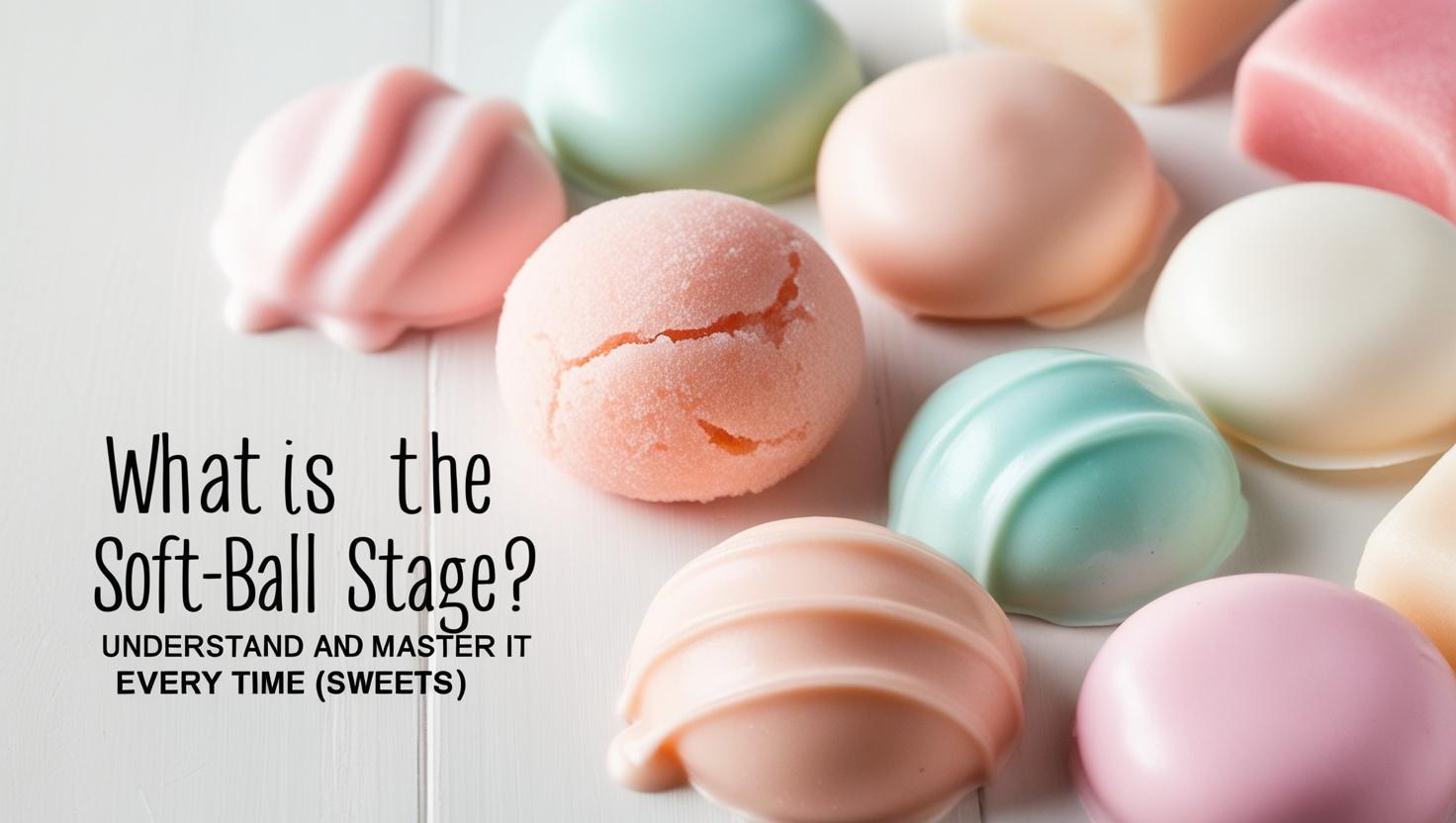If you’ve ever made fudge, caramel, or traditional candies like brigadeiro or toffee, you’ve likely come across the term “soft-ball stage.” It’s a crucial concept in candy-making and can mean the difference between smooth, creamy perfection and a sticky disaster.
In this article, we’ll explore what the soft-ball stage really is, why it matters, and how you can master it every time — even without a thermometer.
What Is the Soft-Ball Stage?
The soft-ball stage refers to a specific temperature and texture that sugar syrup reaches during cooking — usually between 235°F and 240°F (112°C to 116°C).
At this stage, if you drop a small amount of the syrup into a bowl of cold water, it forms a soft, flexible ball that flattens easily when removed from the water.
It’s used as a benchmark in candy-making and sugar-based desserts that require a thick but still creamy consistency.
Why Is It Called “Soft-Ball”?
The name comes from the way sugar behaves when cooled at this stage:
- When dropped into cold water, the syrup forms a ball.
- It’s soft and malleable, not sticky or runny.
- When you press it between your fingers, it flattens easily without falling apart.
It’s the texture you want in recipes like fudge, fondant, marshmallows, and some types of caramel or dulce de leche.
Why the Soft-Ball Stage Matters
Sugar goes through different stages as it heats — and each one produces a different texture. The soft-ball stage is important because:
- It gives structure to confections without making them hard or brittle.
- It ensures that fudge sets properly without being too soft or too crumbly.
- It’s key to controlling crystallization in cooked candy recipes.
Using this stage correctly results in smooth, creamy, well-textured treats.
How to Test for the Soft-Ball Stage (Without a Thermometer)
Don’t have a candy thermometer? No problem. You can use the cold water method, which has been used for generations.
Cold Water Method
- Fill a glass of very cold water (with ice cubes or chilled tap water).
- Drop a small spoonful of the boiling sugar syrup into the water.
- Wait a few seconds, then use your fingers to retrieve the sugar drop.
- If it forms a soft, pliable ball that holds its shape briefly, then flattens — you’ve reached the soft-ball stage.
If the syrup dissolves or doesn’t form a ball, keep cooking. If it forms a firmer ball, you may be moving into firm-ball stage (around 245°F).
Using a Candy Thermometer (Recommended for Accuracy)
A digital or traditional candy thermometer is the most precise way to check sugar temperatures.
Tips for using one correctly:
- Clip it to the side of the pan without touching the bottom.
- Make sure the bulb or sensor is submerged in the syrup.
- Don’t stir the thermometer with your mixture.
- Wipe clean after each use to avoid buildup.
Soft-ball stage: 235°F to 240°F (112°C to 116°C).
Common Recipes That Use the Soft-Ball Stage
Understanding this stage is essential for a variety of confections:
- Fudge: Reaching this stage helps the sugar crystalize just enough for a firm but creamy texture.
- Brigadeiro: Brazilian favorite that thickens beautifully at soft-ball consistency.
- Caramel sauce: Soft-ball helps it remain pourable but thick.
- Penuche or brown sugar fudge
- Buttercream (boiled sugar method)
Troubleshooting: What Can Go Wrong?
1. Undercooked (Below 235°F):
- Syrup is too runny
- Fudge won’t set
- Caramels will be too soft or sticky
2. Overcooked (Above 240°F):
- Candy becomes dry, crumbly, or hard
- You may unintentionally enter the firm-ball or hard-ball stage
3. Thermometer Inaccuracy:
- Always calibrate your thermometer by testing it in boiling water (should read 212°F or 100°C). Adjust as needed.
Bonus Tip: Patience Is Key
Sugar takes time to reach the correct stage, especially on medium heat (which is ideal for most candy recipes). Resist the urge to increase the heat too quickly — rapid boiling can lead to scorching or inaccurate readings.
Use a heavy-bottomed pan, stir gently (only if the recipe calls for it), and keep a close eye on the bubbles.
Final Thought: Sweet Success Starts with Precision
Once you understand the soft-ball stage, you unlock the secret to dozens of candy recipes. Whether you’re making classic fudge, experimenting with international sweets, or simply perfecting your caramel sauce, mastering this technique gives you full control over texture and flavor.
With a little patience and practice, you’ll soon be reading sugar syrup like a pro — no guesswork, no failures, just perfect results every time. 🍬🔍
